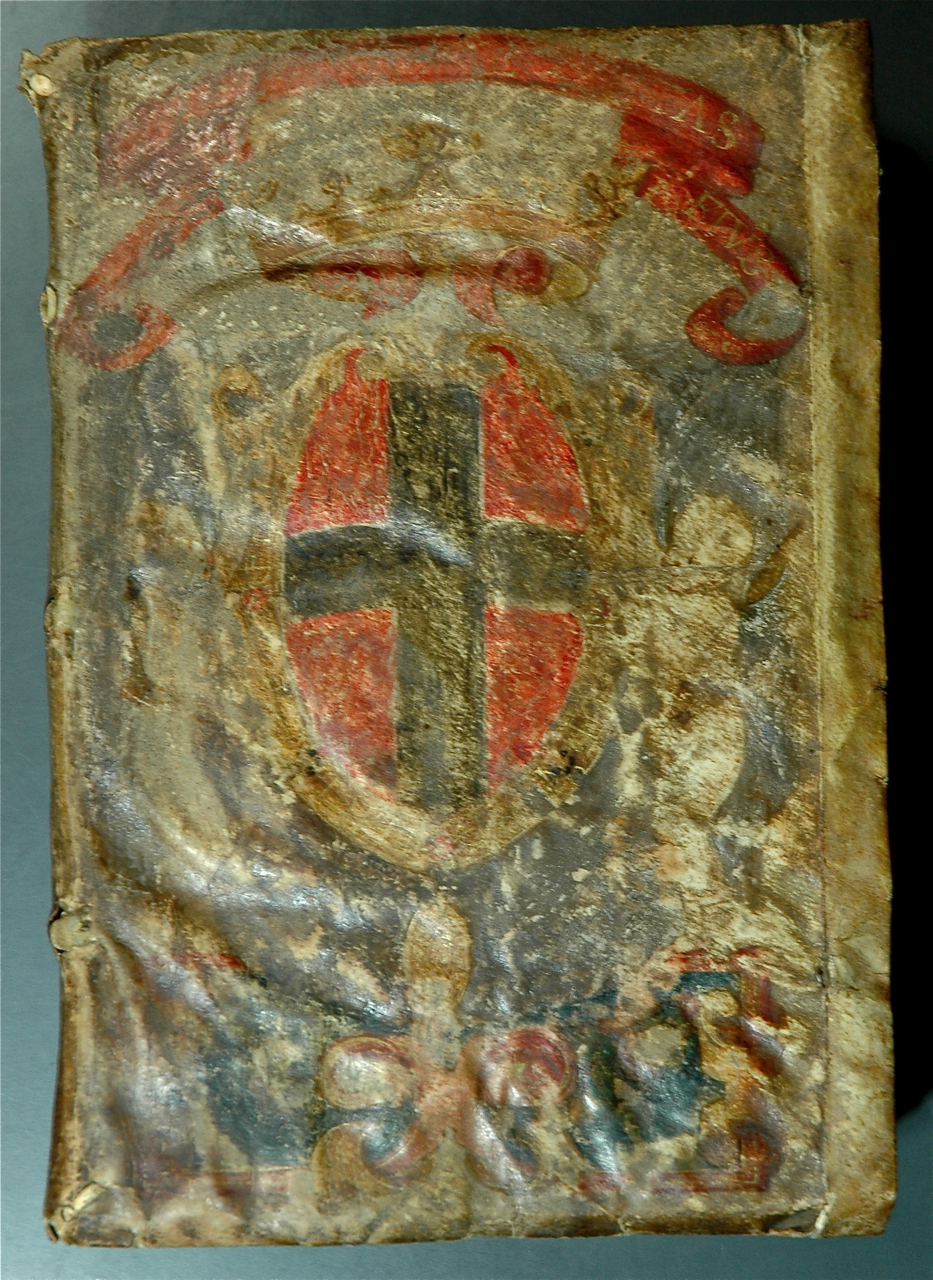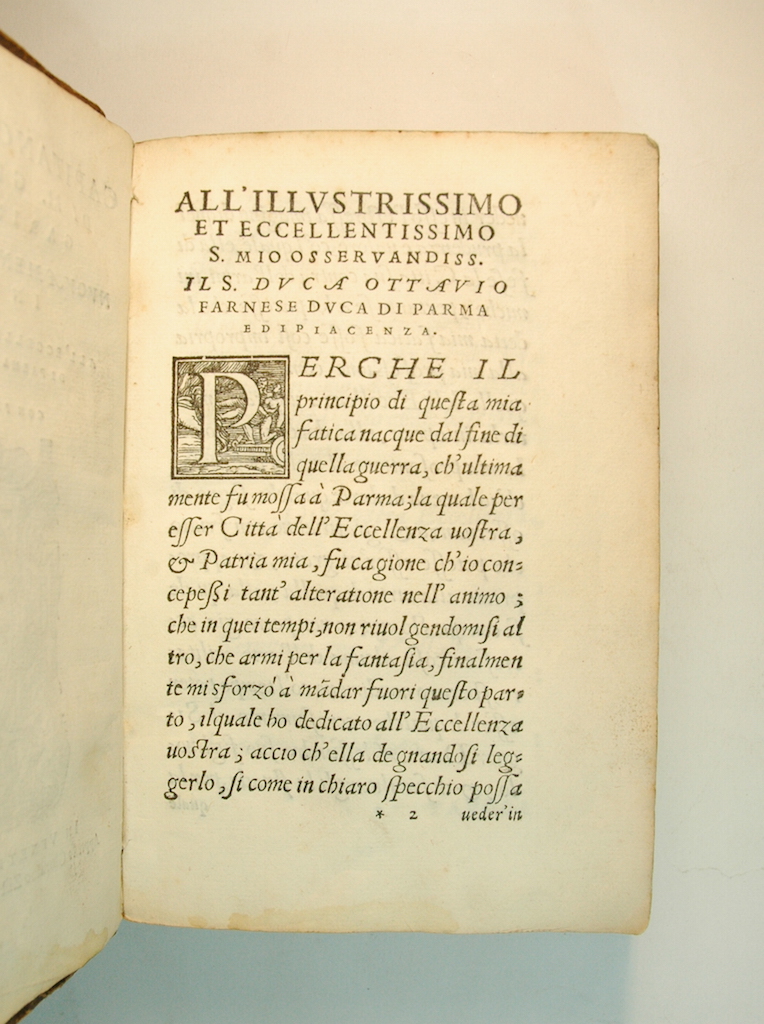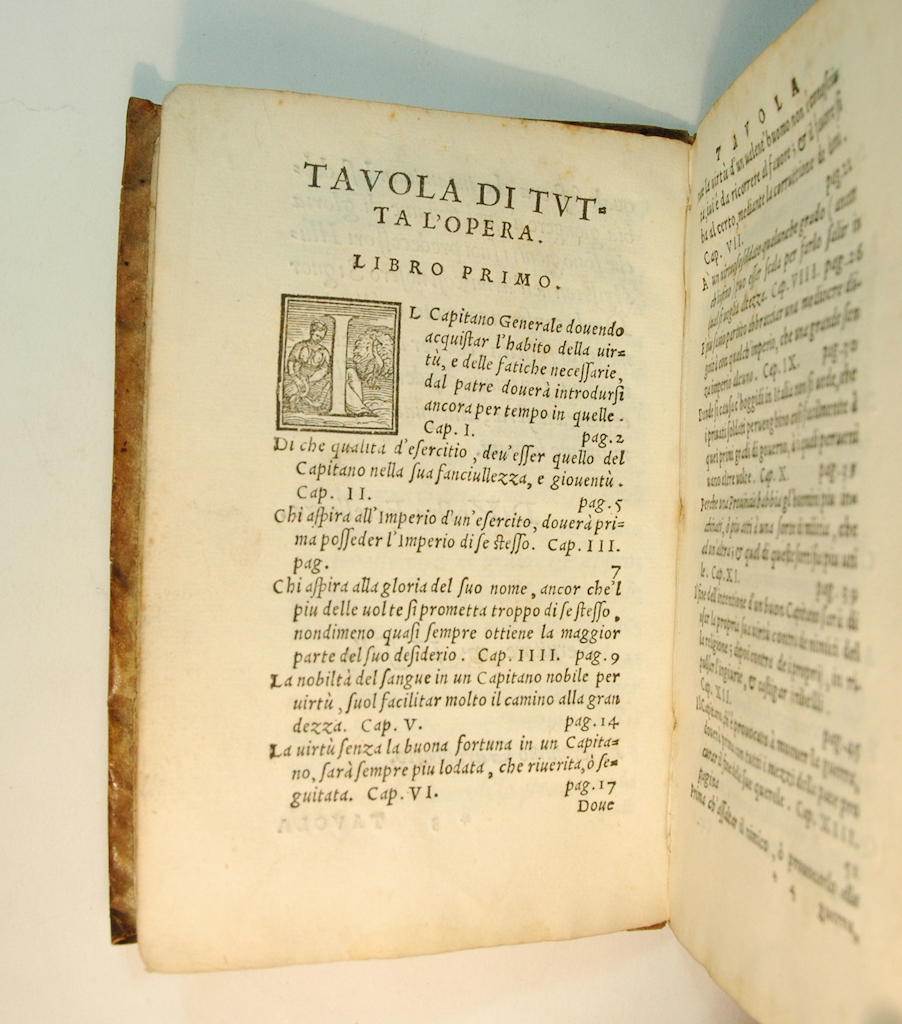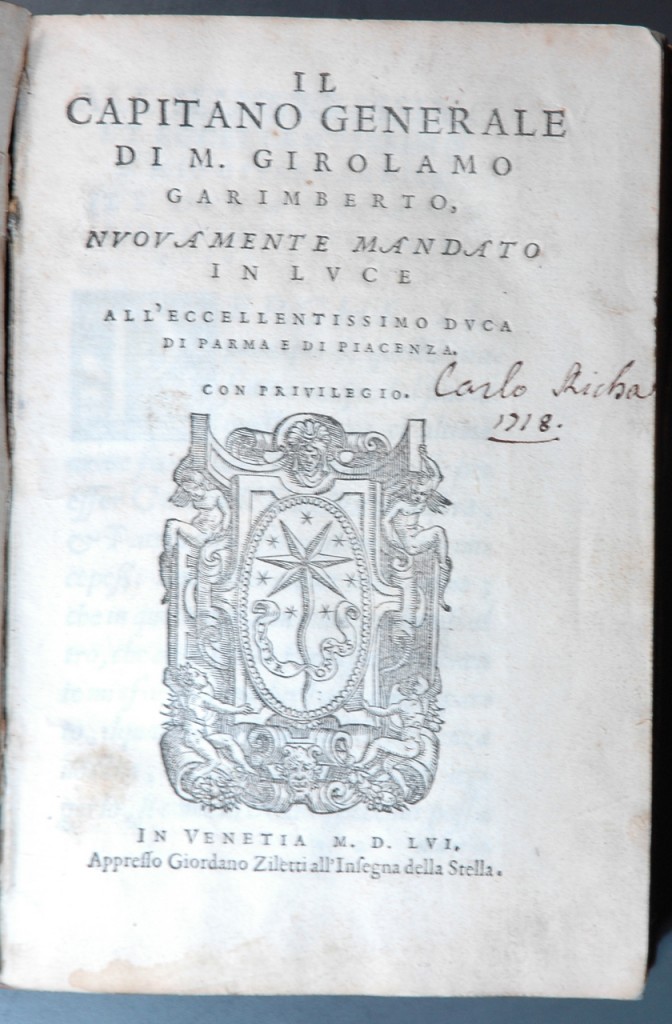GARIMBERTO, Girolamo
CONTEMPORARY PAINTED BINDING
Il Capitano Generale. Nuoavamente mandato in luce
Venice, Ziletti, 1556£9,750.00
FIRST EDITION. 8vo. pp. [xx], 582, [iv]. Italic letter. Woodcut printer’s device on title, historiated woodcut initials, autograph “Carlo Richa 1718” on t-p. Light age yellowing, some minor mostly marginal spotting. A very good copy in contemporary limp vellum with the contemporary painted arms of Emanuele Filiberto, Duke of Savoy, upper cover with the arms of Savoy held aloft by putti, crown above and motto gilt on red banner, arms on lower cover with lions rampant below and female figures at sides, all edges richly gilt and gauffered, painting rubbed. In perspex fldg. case.
First edition of Garimberto’ s important treatise on the art of warfare with the splendid and most appropriate provenance of Emanuele Filiberto, Duke of Savoy, and a particularly rare example of a painted binding with the Duke’s arms; a few examples are at the Bibliotheque Nationale; none, it appears, in Turin, or elsewhere in Italy. On the death of his brother Louis (1536), Emanuele Filiberto became successor to the throne of Savoy. He inherited in 1553, an almost empty honour, as the vast majority of his hereditary lands had been occupied and administered by the French since 1536. He started a most distinguished military career in 1543 when he entered the service of his uncle Charles V, with the aim of recovering his Duchy, and took part in the imperial victories in Ingolstadt (1546) and Mühlberg (1547). He later joined his cousin Philip II in Spain participating in the defence of Barcelona from French maritime attack in 1551 and he served with Ferrante Gonzaga in the guerrilla war between the Spanish and French in Piedmont. He was also a suitor to the future Queen Elizabeth I. In 1553 he was appointed lieutenant-general and supreme commander of the Spanish army in Flanders, and in 1556 governor of the Netherlands. In 1557 he won a decisive and brilliant victory against the French troops led by Anne de Montmorency and Gaspard de Coligny. In the subsequent Treaty of Cateau-Cambresis (1559) Emanuele Filiberto was rewarded with the return of his estates. The peace was sealed by his marriage to Margaret, daughter of Francis I. A skilled political strategist, he took advantage of various squabbles in Europe to slowly regain territory from both the French and the Spanish, including the city of Turin which he made the capital of his new Kingdom. He is considered one of the chief founders of the state of Savoy.
Garimberto’s treatise on warfare and government, based on the work of Machiavelli, would have been most useful to him.“When he came to compose his book on warfare it was largely to the ‘Discoursi’ and the ‘Arte della guerra’ that he turned for inspiration, method, and subject matter – although he makes effective use of Fourquevaux’s ‘Instructions’ for more up to date information on modern battles… His procedure is to follow a general discussion of a particular issue with ancient examples especially from the Career of Julius Ceasar, and then to add modern and contemporary instances. The plan is not slavishly executed. Individual examples are themselves subjected to further scrutiny; and Garimberto is not unwilling to challenge Machiavelli. … He comments on how military virtu has enabled men to rise from humble origins to high position; and he devotes a whole chapter to the preparations necessary to bring off a military coup.” Sydney Anglo, David Cressy. ‘Machiavelli – the First Century.’. A most prestigious copy
Carlo Richa is most probably the distinguished Piemontese professor and physician who published a major work “Morborum vulgarium historia” on the plague, in Turin in 1721, later translated into English.
BM STC C16th It. p. 290. Cockle 520. Not in Adams.In stock






